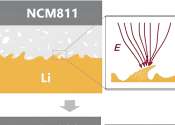Corralling ions improves viability of next generation solar cells
Researchers have discovered that channeling ions into defined pathways in perovskite materials improves the stability and operational performance of perovskite solar cells. The finding paves the way for a new generation of ...
Feb 27, 2023
0
284


